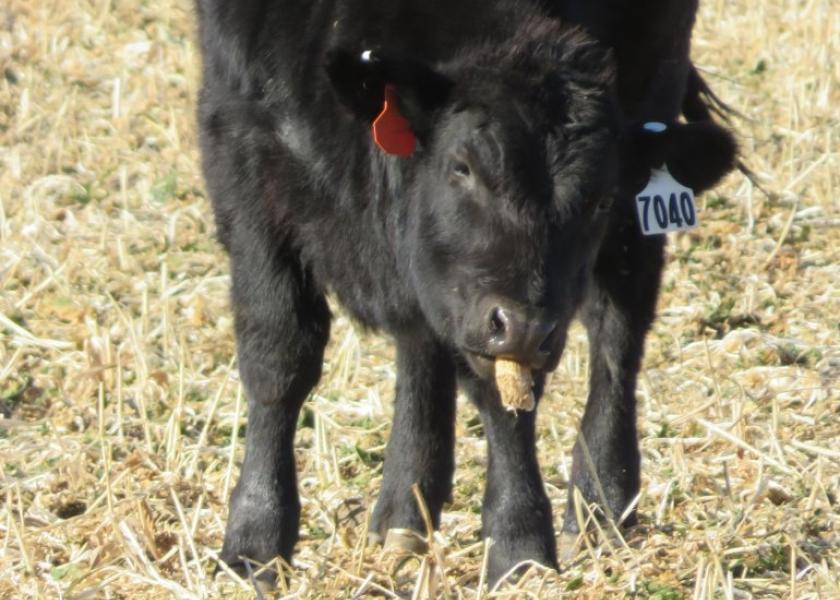Row Crop Herbicides Can Limit the Use of Row-crop Ground for Forage Production

Those that rent ground for residue or cover crop grazing should talk with the grower to be sure that the herbicides applied allow use of the forage for feed.
By: Mary Drewnoski, UNL Beef Systems Specialist and Amit Jhala, UNL Weed Management Specialist
The herbicides used on cash crops can affect not only whether the residues of that cash crop should be grazed or harvested for feed but also if a secondary crop (cover crop) planted after the cash crop can be used for forage.
If you graze or harvest forage from cropland then there are two restrictions related to herbicides that you need to consider.
1) If you are going to be grazing or harvesting the crop or its residues then you need to look at the grazing/harvest restrictions posted on the herbicide.
2) If you want to grow a forage crop after your cash crop then you need to look at the crop rotation intervals (plant back restriction) on the label.
A pesticide label is a legal document and the instructions must be followed to avoid violating federal law. If a rotation restriction is listed on the label but not for the species you plan to plant you must follow the restriction listed for “other crops” or the longest rotation restriction listed on the label. Unfortunately, this often limits the use of brassicas such as turnips and radishes as they are not often listed on labels.
Products containing atrazine (Aatrex, Anthem ATZ, Breakfree ATZ, Harness Extra, Lexar EZ etc.) are commonly used in corn for weed control. The restriction for grazing/harvesting corn silage or corn residue itself is only 45 days in many of these products. However, products that contain atrazine restrict the planting of any crop other than corn or sorghum until the following year and restrict the planting of spring seeded small grains, small seeded legumes, and grasses the year following application. Thus if atrazine is used on corn ground, then you should not use any cover crop for forage; however, you can plant a cover crop assuming the risk of crop failure due to potential of atrazine carryover injury. The potential of a herbicide for carryover injury is hard to predict because it depends on several factors, including rate of herbicide applied, soil texture, pH, rainfall, and the half-life of the herbicides (the time it takes for 50% of the active ingredient to dissipate).
Those that rent ground for residue or cover crop grazing should talk with the grower to be sure that the herbicides applied allow use of the forage for feed. Your cattle may not be affected by grazing the forage where a chemical with a grazing restriction/crop rotation restriction is on the label, but there may be other concerns such as problems with the chemical residues in the meat. Sometimes studies were actually conducted to know there is a safety concern. In other cases, the chemical company may not have chosen to conduct all the studies required for labeling. If that’s the case, the government requires the strongest restrictive language be placed on the label. Without the proper tests being conducted the risk for toxicity to cattle or herbicide residues in the meat are unknown. Thus, beef producers should follow these restrictions as part of their Beef Quality Assurance Program thereby “insuring a safe, wholesome, and healthy beef supply.”
Bottom-line, if you want to graze/bale crop residues or produce a secondary forage crop, plan your herbicide regimen with these restrictions in mind. For more information about herbicide grazing/harvest restrictions or crop rotation intervals, refer to 2014 Guide for Weed Management in Nebraska (EC 130). It is available to purchase at marketplace.unl.edu.







